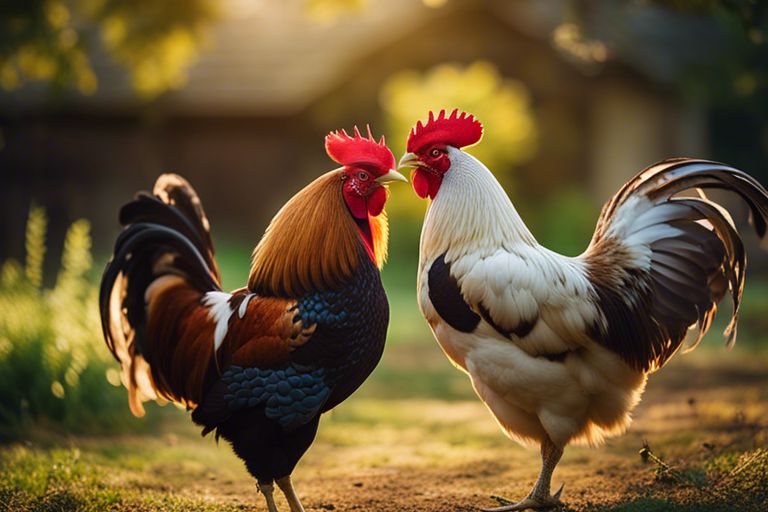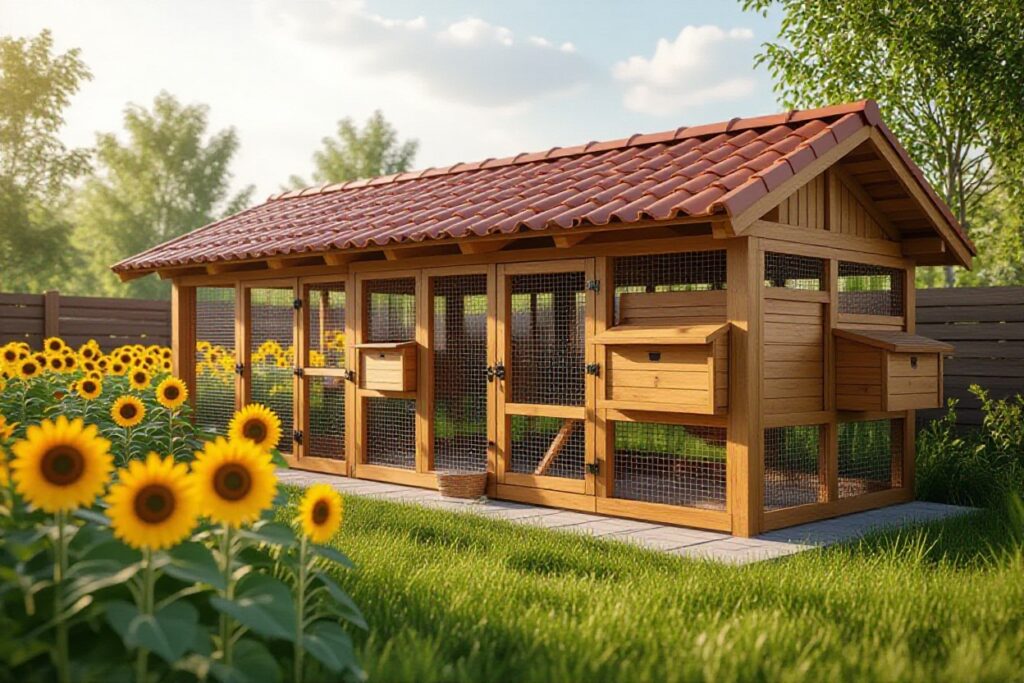It’s fascinating to examine into the intricate world of rooster mating habits and gain insights into their reproductive cycle. Roosters, known for their distinct crowing and vibrant plumage, have a unique way of courting and mating that plays a crucial role in the continuation of their species. Understanding the behaviors and patterns associated with rooster mating can offer valuable insights into their biology and evolution. Let’s explore the fascinating world of rooster mating habits and gain a deeper understanding of their reproductive cycle.

The Rooster’s Role in Flock Dynamics
Hierarchical Structure and Mating Rights
The hierarchical structure within a flock of chickens plays a crucial role in determining mating rights among roosters. Any rooster’s position within the pecking order directly impacts his access to hens for mating. Dominant roosters typically have priority in mating with the hens, often leading to aggressive behavior towards subordinate males. This social hierarchy is established through displays of dominance and aggression, ensuring that the strongest roosters have the best chances of passing on their genes.
Courtship Rituals and Displays
On the other hand, courtship rituals and displays serve as a crucial aspect of the mating behavior in roosters. Courtship involves a series of behaviors such as vocalizations, dancing, and puffing up feathers to attract the attention of hens. Roosters showcase their health and vigor through these displays to entice potential mates. These rituals also serve to establish the rooster’s dominance and compatibility as a mate.
Mating for roosters is not just a physical act; it is intricately linked to social dynamics and behavior within the flock. Understanding the role of hierarchy, courtship rituals, and displays provides insights into the complex mating habits of roosters and their importance in flock dynamics.
Mating Behavior and Reproduction Process
Mating Rituals and Copulation
Some of the most intriguing aspects of rooster mating behavior involve their elaborate rituals and copulation processes. To attract hens, roosters often engage in intricate dances, displaying their vibrant plumage and impressive vocalizations. Once a hen is interested, the rooster will perform a courtship dance, which includes wing and tail displays, in preparation for copulation.
Fertilization and Egg-Laying Cycle
Cycle after cycle, rooster reproduction involves the crucial process of fertilization and egg-laying. After successful copulation, the sperm fertilizes the ovum within the hen’s reproductive tract. The fertilized egg then goes through a complex development process before being laid by the hen.
Another fascinating aspect of the fertilization and egg-laying cycle is the role of the oviduct in the hen’s body. This specialized reproductive organ is responsible for nurturing the developing embryo and forming the protective shell around the egg. The entire cycle, from fertilization to egg-laying, is a crucial part of the rooster’s reproductive success.

Factors Affecting Rooster Mating Habits
Despite roosters being known for their aggressive mating behavior, various factors can influence their mating habits. Understanding these factors can provide insights into the reproductive cycle of roosters and help in managing their breeding activities.
Environmental Influences
Factors such as light exposure, temperature, and space availability can significantly impact rooster mating habits. Light exposure plays a crucial role in regulating rooster reproductive hormones, while temperature extremes can affect their breeding behavior. Additionally, the availability of space in the coop can influence the social dynamics among roosters and their mating patterns.
Genetic and Health Considerations
Genetic factors and the overall health of a rooster can also play a role in its mating habits. Roosters with strong genetic traits for fertility and robust health are more likely to exhibit vigorous mating behavior. Considerations such as genetic diversity, disease resistance, and overall fitness can influence a rooster’s ability to successfully mate and produce offspring.
After considering these various factors, rooster owners can better understand and manage the mating habits of their flock, leading to improved breeding outcomes and healthier poultry populations.

Human Intervention in Rooster Reproduction
Selective Breeding Practices
For centuries, humans have actively participated in the mating of roosters to select desired traits and characteristics in their offspring. Selective breeding practices involve carefully choosing the parent birds based on qualities such as feather color, comb shape, size, and even temperament. By controlling the mating process, breeders can influence the genetic makeup of future generations, aiming to enhance specific features or productivity in roosters.
Ethical Implications and Animal Welfare
To ensure the well-being of roosters involved in breeding programs, ethical considerations and animal welfare standards must be deliberated. The intense focus on specific traits or qualities in roosters can sometimes lead to inbreeding, health issues, or reduced genetic diversity in the population. It is crucial for breeders and researchers to strike a balance between selective breeding goals and the overall welfare of the roosters to maintain a healthy and sustainable breeding program.
Intervention in rooster reproduction through selective breeding raises ethical concerns regarding the long-term health and viability of the species. Breeders must prioritize genetic diversity, minimize the risk of hereditary diseases, and ensure that roosters have a good quality of life. By implementing responsible breeding practices and considering the well-being of the birds, human intervention can positively contribute to the genetic improvement of roosters while upholding ethical standards in animal husbandry.
Conclusion
Summing up, roosters have fascinating mating habits that revolve around establishing dominance, courtship rituals, and successful copulation. Understanding their reproductive cycle is crucial for poultry breeders to ensure successful breeding and egg production in their flock. By knowing the intricacies of rooster mating behaviors, breeders can optimize their breeding programs and ensure the health and well-being of their chickens.
FAQ
Q: What are Rooster mating habits?
A: Roosters are known to be polygamous, meaning they will mate with multiple hens. They engage in a courting ritual to attract the hens before mating.
Q: How often do Roosters mate?
A: Roosters can mate multiple times in a day, especially during the breeding season. They are known to be very active in seeking out opportunities to mate with hens.
Q: What is the reproductive cycle of a Rooster?
A: The reproductive cycle of a Rooster is influenced by factors such as daylight hours and hormone levels. They are most active in mating during the spring and summer months.
Q: How do Roosters attract hens for mating?
A: Roosters attract hens by displaying their vibrant plumage, performing elaborate dances, and making unique vocalizations. These behaviors signal their health and vitality to potential mates.
Q: Do Roosters have a preference for certain hens when mating?
A: Roosters may show preference for certain hens based on factors such as size, health, and social status within the flock. They may compete with other roosters to establish dominance and access to preferred mates.
Q: What role do hens play in the Rooster mating habits?
A: Hens play a vital role in the Rooster mating habits by choosing which rooster to mate with based on their displays, dances, and overall condition. They can reject advances from roosters they are not interested in mating with.
Q: How long does the mating process typically last for Roosters?
A: The mating process for Roosters can be quick, lasting only a few seconds to a few minutes. However, they may engage in multiple mating sessions with different hens over a period of time, especially during the breeding season.











